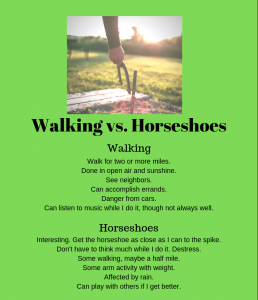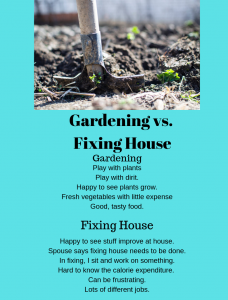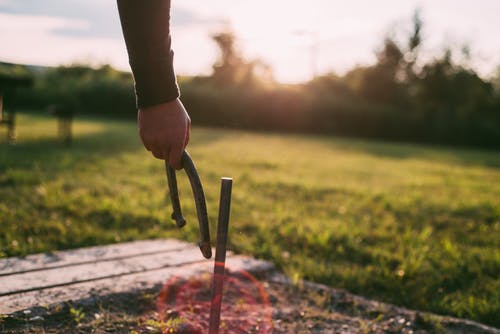For all of the constant talk of STEM in schools (science, technology, engineering, and math), you’d think our society would be completely based on the scientific method in all of its facets.
You’d think government, business, and personal decisions would always be based on facts and studies.
If you did, you’d be wrong.
Concepts like “scientific method” and “evidence-based” come down to empty buzzwords for many people who either forget what they mean or aren’t clear how to apply them within their own lives and their areas of concern.
Research is by necessity abstract, generalizing across a given population.
When you’re trying to apply the fruits of the scientific method in your life, you’re taking it to the specific. You. The individual. You have to reconcile the studies and the scientific method with your experience.
What is the scientific method?
Science isn’t the same thing as truth. Rather, it’s a process that’s the most likely to lead to the truth. Science is focused on the physical world, upon observable phenomena. It strives to make these observations in an unbiased manner. It seeks to uncover general truths and the operation of fundamental laws.
If there’s not a physical component to the phenomena, a way has to be found to make it observable.
If there’s nothing physical about what you’re concerned about, it falls in the domain of philosophy.
Understanding the microscopic world had to wait until microscopes were invented.
If it’s not a material object or phenomena being studied, then ways to make it material, so people can study it has to be found.
Scientists who do this look to the effects of the unobservable phenomena.
Science is not philosophy, though you can be scientific about your philosophy and philosophical about your science!
The scientific method involves the testing of an idea. Not just any idea. Not, say, “I’d like a hamburger for lunch.” That’s not testable. That’s a statement of fact. The scientific method involves the testing of the idea of how something works. The ten-dollar word for this kind of idea is “hypothesis.”
The idea has to be tested effectively; otherwise, it remains as conjecture. The scientific method involves making observations, asking questions, and performing experiments. Science practitioners employ statistical formulas like confidence intervals, standard deviations, and others. All of this is to take the particular experience and ideas of the researcher and look for a general truth.
The information gathered from the scientific method, in turn, shapes the idea. The idea fleshes out and grows.
This exchange goes back and forth, as ideas are taken from the individual or anecdotal to the general.
Among ideas that seem to work, the idea has to go back to the particular.
Like any human activity, this process is vulnerable to error. When the scientific method is applied honestly and ethically, it works amazingly well. When it’s applied in a corrupt fashion, it doesn’t.
We don’t have to look far for examples in recent history to find examples of the scientific method being applied in a corrupt fashion with tragic consequences. The opioid epidemic has its root in this. So does the anti-vax movement.
The concept of “science” doesn’t mean much without the scientific method. The scientific method is the way you get science. The process matters.
It should be noted, too, that the scientific method and the dispassionate way it’s applied doesn’t make for punchy, clickbait articles that drive the Internet. It seems to run contrary to the instinctive way humans prefer to think about a lot of things.
1. Understand how researchers are studying the subject
The first step to applying the scientific method in your life is to do your best to understand what the researchers are talking about. When it comes to health, it’s helpful to understand anatomy and physiology.
Also helpful is to have a basic understanding of statistics.
Statistics seem to be an especially common bugaboo and the source of a lot of misunderstanding.
For example, a 1998 study linking autism to vaccines was based on a study of only 12 children. Even if the researcher didn’t change the data to satisfy the law firm paying him off, it should have raised all kinds of red flags in anybody trying to apply the idea that vaccines caused autism to their particular situation. That sample size is very small.
In addition, scientific studies also should be replicable. The autism studies weren’t.
TV and print media are often guilty in this area. They’re the ones who are looking at the study and distilling it for their audience, the individual.
Don’t look for them to change, however. They want your attention. To do that, they have to tell you fresh and new things. If they went and pointed out a study found a link between vaccines and autism but the study was incredibly small, that wouldn’t be news. That would be a blip. Not worthy of reporting. Plenty of other larger, more statistically valid studies found vaccines were safe. That, however, isn’t news. That’s expected.
This is a very common error, and it’s repeated again and again in many different contexts. The results of any kind of poll should never be reported without the confidence interval. If you took a poll of only 12 people and tried to extrapolate a truth from that, your margin of error would be so large the results of a poll would be worthless.
You, yourself, need to look at the source material whenever possible, especially if you’re going to make an important decision or change your life in some way because of it.
2. Do your own study on yourself
The key is to realize you’re taking the general down to the specific. Better studies involving the scientific method deserve more of your attention and effort. Small studies, at most, should mean you need to keep an eye on it.
Not everything is obvious from reading a paper about a study. If you incorporate it into your life, you can do a study of one.
When you try to put information into action, you become aware of issues like whether its implementation is practical or effective for you.
For example, when you’re looking to take a self-help angle toward improving your life, your body making and using its own serotonin in the right amounts is one of those unseen, unthought-of benefits of eating a healthy diet and getting enough exercise. You can twerk a few more things in your life to get the most benefit from the serotonin you make for yourself, however.
Study after study comes out extolling the virtues of activities like exercising regularly, walking, eating a particular food, and so on.
Serotonin is being made and taken away during those activities too.
For example, this study of studies (or meta-analysis) makes the case gardening is good for your health. It helps people get moderate physical activity, provides them with healthy food, and encourages the consumption of vegetables by making them inexpensively available.
Other studies posit a lot of the benefit from gardening is due to microbes in the soil of the species known as mycobacterium vaccae. It has been shown to make people feel happier and smarter.
Put the studies together, and it’s safe to assume there’s something very good about gardening.
What is it, however?
You can’t do anything with the information, however, if you don’t have a place where you can garden.
One question produces another.
Are these bacteria everywhere? They were identified in cow dung initially. What if you garden in a place that doesn’t have much exposure to cow dung and use plant compost instead?
What if the thing that’s making people happy is the moderate exercise? What if it’s some ancestral cellular memory of farming? What if it’s sunshine? What if it’s forgetting your troubles, replacing thinking about some frustrating situation at work, in a relationship, or with money with something about gardening?
There’s something clearly good for you about gardening. What if it’s one of these causes, but what if it’s a combination of all of them?
If you can’t garden, you can still try to make gardening work for you.
You can still apply the scientific method using the study as a springboard.
Your study of one would never make it into a scientific journal. The sample size is way too small. But that’s not the point! The point is helping yourself.
(A caveat to the scientific method)
The health care establishment, merchants, and most health writing focuses on what pills or treatments to take in order to get some desired effect. They isolate in order to study, to look for cause and effect. Doing this leads to that. There’s a certain comfort in x + y = z. Person + Vitamin C pill = all of the beneficial effects of taking Vitamin C.
When applying the research, you’ve got to think holistically. You’re applying it to another system. You. The research subjects have to fit into your life.
For example, you might live in an apartment with no community garden for miles away.
You might have allergies so bad that gardening makes you feel much worse than not gardening.
You might work a schedule where getting to work in a garden is impossible.
Gardening doesn’t work out for everyone.
Walking is another of these activities.
You might live in an area where walking outside is a seemingly risky activity. Some people might mug you. Cars whizzing by you at high speeds. Packs of wild dogs and animals waiting to attack you. Militants ready to fire upon you. Walkscore.com might give a very low score to the area for one reason or another, like not having any place to walk to.
These healthy activities don’t always work out for people all the time. Suppose you have the area and the means to garden, fine. You can do something about the study. If you don’t, then you’ve got to move on to way #3.
It’s never going to be a perfect fit. You’re going to need to interpret the studies into your life. To keep applying the scientific method, you’re going to need to … (keep reading).
3. Think ontologically
This calls for considering the nature of the activity and the nature of the activity you propose substituting. Or the nature of the substance and the other substance. How are they dissimilar? How are they alike? You then have to ask yourself how you can make it work for you.
If you’ve ever been trying to put research into effect for you, you were doing the same thing when you were drilling down into the study and trying to understand how they got their data and how they framed their conclusions.
For example, say you’re thinking of replacing walking with regular games of horseshoes. Come up with five or ten points for each. Then address the points in the framework of each activity.
Example #1

Walking and playing horseshoes actually have a lot in common. They’re activities that get you outside in the sunshine. With walking, you have the opportunity to run across with your neighbors and talk to them. With horseshoes, you can also talk to your neighbors, but you have to invite them over to play.
With walking, you’re probably going to be walking further. Walking, however, doesn’t involve your upper body at all. Playing horseshoes involves throwing a horseshoe with precision. It involves a light weight that you have to lift and suspend in a particular way to hit the target.
Making short lists allows you to dial into the essential nature of the activity. You’re also not going to be able to stop off at the corner market if you play horseshoes. Playing horseshoes isn’t going to allow you to accomplish any errands. On the other hand, when you think about it, you’re going to be able to listen to music while you play horseshoes. All it takes is thinking to put in the earbuds as you toss the shoes.
Many of the health benefits of walking can probably accrue to someone who plays horseshoes for an equivalent period of time. It might, in some cases, be a more desirable activity if you’re worried about being mugged, stray gunfire, or other complications.
Example #2

Sometimes the activities you want to compare consist of many activities, like “fixing up the house.” Sometimes that could consist of fitness and sleep-promoting strenuous activities. Taking out a large tree with thick roots. Moving heavy rocks from place to place.
The trouble is, home repair can also consist of quick jobs that don’t have very much of a health component like repairing a screen, stabilizing and organizing a shelf, or unclogging a sink.
In such a case, it’s better not to think of doing that for health. You may or may not need to do the task, but you’re probably not going to repair shelves over and over again for weeks at a time.
It’s hard to count something general like “fixing up the house” as a replacement activity for gardening.
By keeping an eye out on the media for the latest studies and considering substitute activities in light of the studied activity you can maximize your wellbeing.
And when you do, the mechanics behind something like serotonin won’t matter. It’ll be doing what it needs to do for you anyway.
This is learning from experience.
While it won’t be scientifically as valid as a larger study, even a study of just 12 people, it doesn’t matter. The reason goes back to the definition of science. Science seeks to formulate general truths in an organized, systematic way. You’re seeking to apply it where it matters most: to yourself.
4. Be Dispassionate
People all have their biases, their preferences. It pays to be aware of them. When I think of the way my wife and I have applied the scientific method in our own lives, the need to be dispassionate becomes readily clear, especially when something you’re trying doesn’t work for you and leaves you scratching your head for an alternate solution.
About 15 years ago, we were dealing with a set of symptoms related to body inflammation. An anti-inflammatory diet was suggested to us. After trying to incorporate it into our lives, it didn’t have enough of an effect and ran against other considerations like fat and cholesterol. It was impractical.
When that happens, it’s easy to feel despondent.
We had to find other ways of dealing with the inflammation.
Acknowledge your disappointment and go back to the drawing board. Easy to say, hard to do.
Another time I was seeking to see if my fitness level could stay up if I worked out at home as opposed to going to a gym.
It’s easy for professional scientists to apply the scientific method to a population they don’t know. When it comes to you and your family, it’s not so easy. Nevertheless, being dispassionate is key.
One way to do this is to think in terms of probability; you don’t have to reject a conclusion straight out. Instead, say, “That’s not likely.”
The better you can do this, the better the scientific method will work for you in your life.
The key is to be dispassionate about your beliefs but enthusiastic about the process.
Updated January 22, 2023
For further reading:
How to treat life like an experiment
Also on the blog:
James Cobb RN, MSN, is an emergency department nurse and the founder of the Dream Recovery System. His goal is to provide his readers with simple, actionable ways to improve their health and maximize their quality of life.
This post includes affiliate links for which we receive a small commission if something is purchased through the link.
